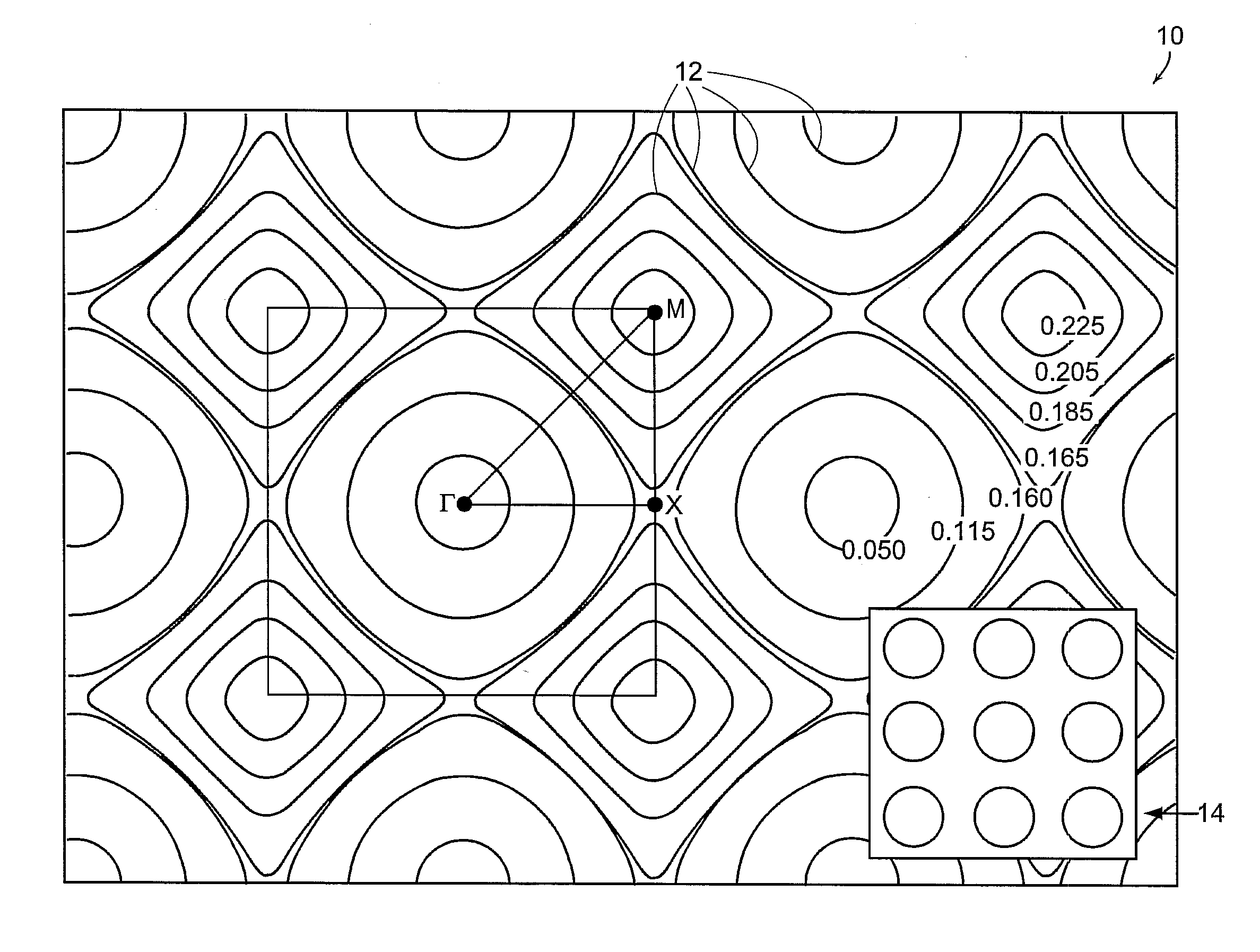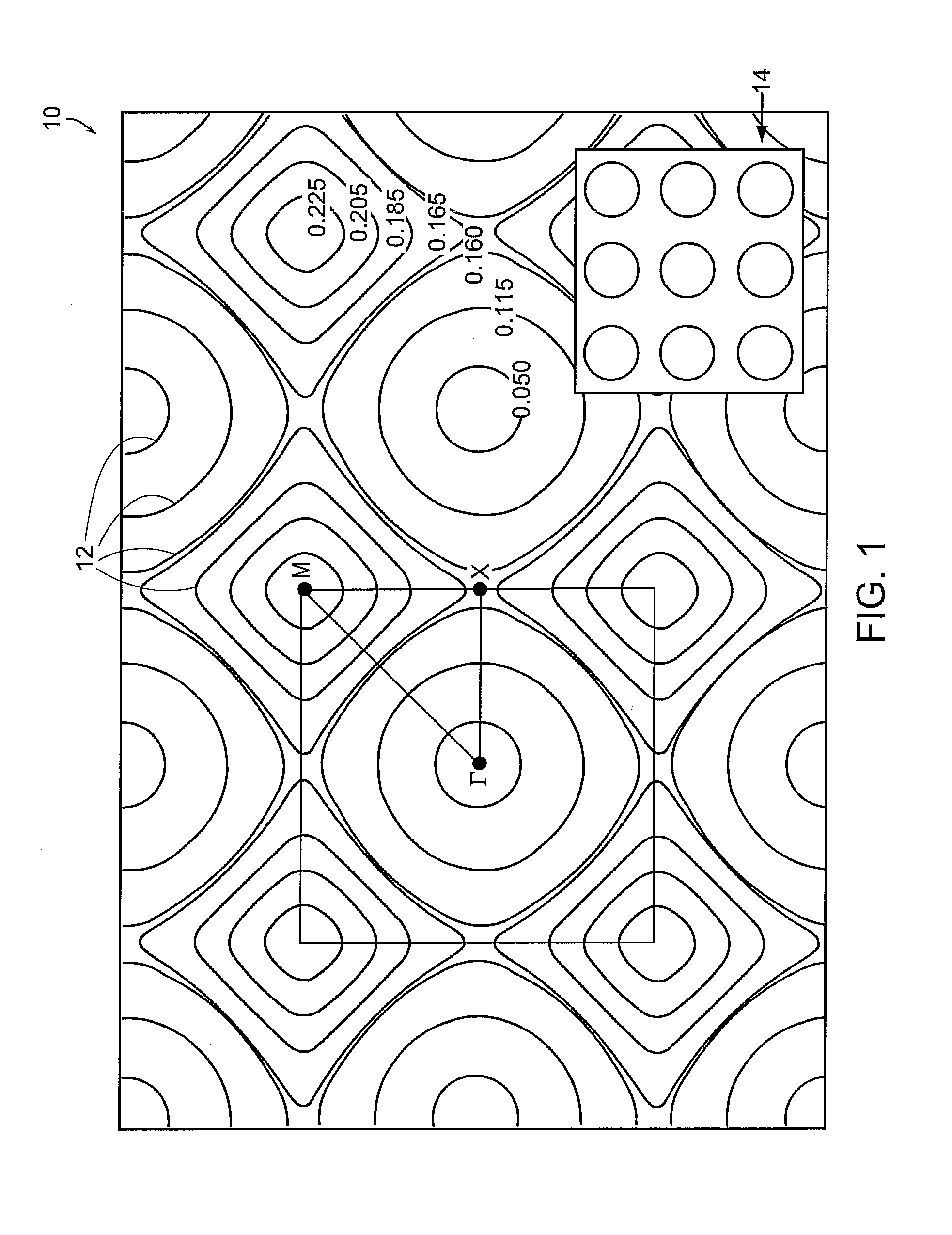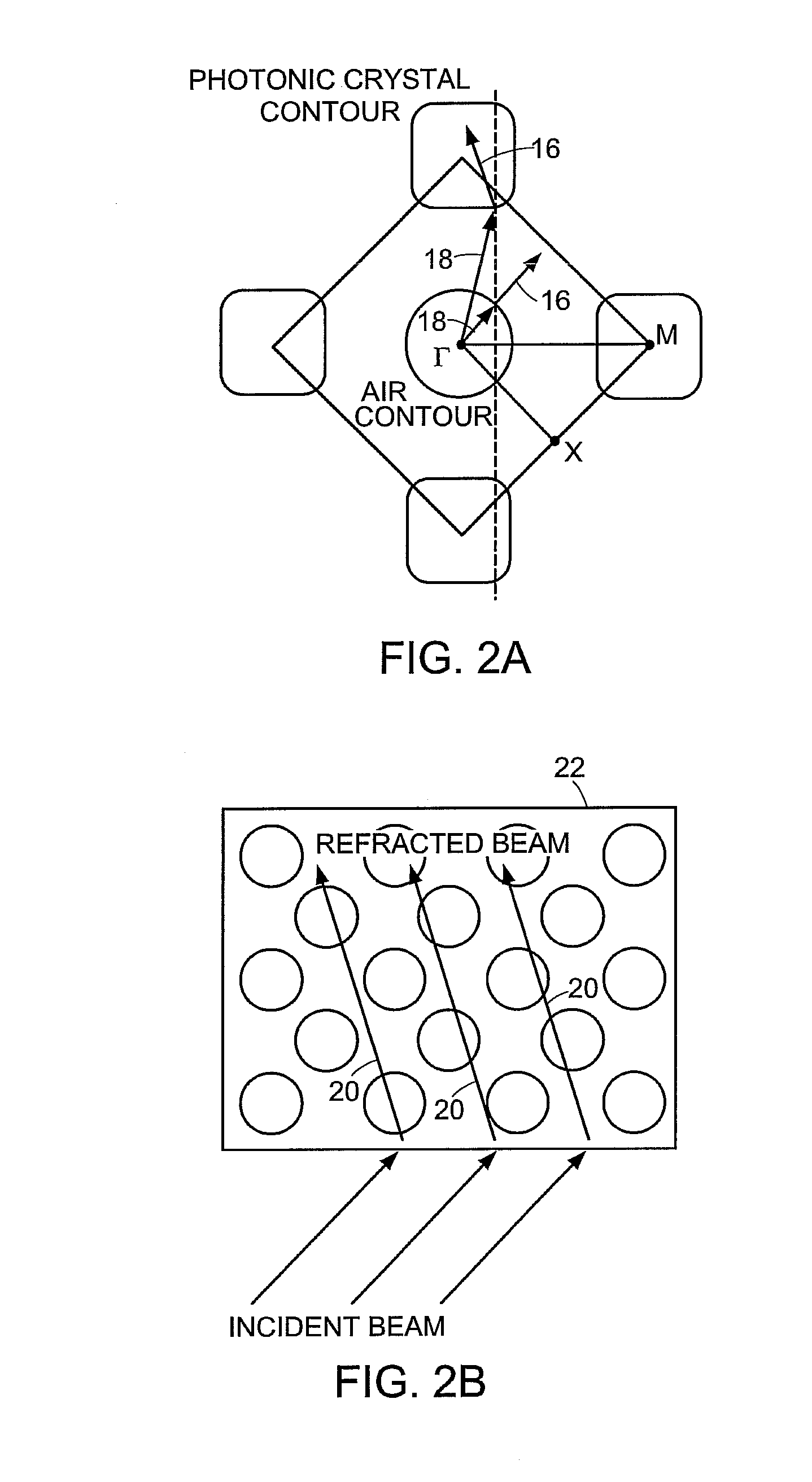Photonic crystal exhibiting negative refraction without requiring a negative effective index
a technology of effective index and photonic crystal, which is applied in the field of material and device for use with electromagnetic fields, can solve the problems of limited material availability, and achieve the effect of reducing the number of materials
- Summary
- Abstract
- Description
- Claims
- Application Information
AI Technical Summary
Benefits of technology
Problems solved by technology
Method used
Image
Examples
Embodiment Construction
[0042]The invention provides an all-angle negative refraction effect for photonic crystals that does not employ a negative effective index of refraction. In accordance with an embodiment, a micro-superlens is described and numerically demonstrated. It has also been discovered that negative refraction may be achieved without employing materials with negative effective index. In particular, the lowest photonic band near a Brillouin zone corner furthest from Γ may actually be employed in an embodiment of the invention. This band has a positive group velocity and a positive refractive index, but a negative photonic effective mass. A single, negative-refracted beam may be achieved, therefore, for all incident angles at the selected frequency range. Such all-angle negative refraction (AANR) is essential for superlens applications.
[0043]For a two-dimensional photonic crystal, a square lattice of air holes in dielectric ε=12.0 (e.g. Si at 1.55 μm) is consider with lattice constant a and hol...
PUM
 Login to View More
Login to View More Abstract
Description
Claims
Application Information
 Login to View More
Login to View More - R&D
- Intellectual Property
- Life Sciences
- Materials
- Tech Scout
- Unparalleled Data Quality
- Higher Quality Content
- 60% Fewer Hallucinations
Browse by: Latest US Patents, China's latest patents, Technical Efficacy Thesaurus, Application Domain, Technology Topic, Popular Technical Reports.
© 2025 PatSnap. All rights reserved.Legal|Privacy policy|Modern Slavery Act Transparency Statement|Sitemap|About US| Contact US: help@patsnap.com



